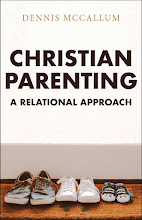We have considered Francis Collins' views on the 'God of the gaps' argument and his views on the fossil record in
Part 1
Part 2
Now we consider his work on:
Interpreting molecular similarities
Collins shows compelling evidence for similarity between human and mouse DNA, even in non-functional sections. His conclusion is that such similarity denotes common ancestry. But while similarity could denote a common ancestor, it could also denote a common maker. Is it reasonable to assume that God would start from scratch every time he introduced a new order of organisms (assuming this happened)? Or would he begin with existing forms, and alter them in meaningful ways to produce the new order? I don't know how we could answer these questions. Clearly, if the notion that God periodically introduced new forms is true, the evidence suggests that he used existing forms as templates from which to build the new forms. This could explain the data just as well as evolution.
As an analogy, consider the way programmers produce a new computer program. They normally do not begin from scratch, but use helpful strings of code from previous programs they have written for various functions. Likewise, a Bible teacher will commonly include illustrations and arguments he has used in earlier teachings when constructing a new one. These similarities don't imply that the new program or teaching sprang from the former, but that the creator of both used existing material combined with new material to produce the new creations.
Collins admits that these similarities are only found "over substantial stretches" and "in some instances."6 He also concedes that, "one might argue that the order of genes is critical in order for their function to occur properly, and therefore a designer might have maintained that order in multiple acts of special creation."7 But he feels that, "there is no evidence from current understanding of molecular biology that this restriction would need to apply over such substantial chromosomal distances." In other words, the similarity of sequence is longer than necessary for the functions involved. But this observation doesn't rule out the use of even relatively long similar chains by a designer. It only shows that such borrowing would not be necessary as far as we know.
He concludes: "this kind of recent genome data thus presents and overwhelming challenge to those who hold to the idea that all species were created ex nihilo." I think this conclusion is warranted. But it may be a bit of a straw-man as well. Only extreme creationists continue to hold that all species were specially created. I fail to see why believers would argue this extreme position. However, the genome data do not present an overwhelming challenge to the view that God engaged in multiple creative acts at various points, combined with evolution.
Next time: Collins' work on biblical exegesis.
6. Francis S. Collins, The Language of God, 134.
7. Francis S. Collins, The Language of God, 134, 135.




No comments:
Post a Comment